Trout Fishing: How-To Techniques and Tips to Catch More Fish
shares
Trout are among the most popular sport fish in America, especially areas with cooler weather.
Depending on the water and climate, trout can be naturally reproducing or raised in hatcheries and then seasonally stocked in popular fishing holes to provide angling opportunities.
There are many species and subspecies of trout and char in the United States.
Rainbow and Eastern brook trout have large native ranges that have been expanded with introductions elsewhere.
Lake trout, or Mackinaw, also now inhabit selected cold, deep lakes across the northern half of the country.
Several other native trout are popularly fished in regions, such as the cutthroat trout present in the northwestern and interior mountain U.S.
German brown trout native to Europe also can be found in many states with cool streams and lakes.
If you’re new to trout fishing or want a refresher course, this article discusses some of the simplest ways to catch these cold-water fish in lakes, ponds, rivers and creeks.
Of course, there is much more to the sport for those who want to cast into it more deeply, but these tips are meant as a starting point.
Mục Lục
Trout Fishing Tackle and Licenses
Rod and Reel for Trout Fishing
A medium-action spinning or casting rod with and complementary reel is a good starting place for conventional bait or lure fishing for trout. If this is your first pole, buy good but not outlandishly expensive equipment. A typical trout rod is about six feet in length, give or take.
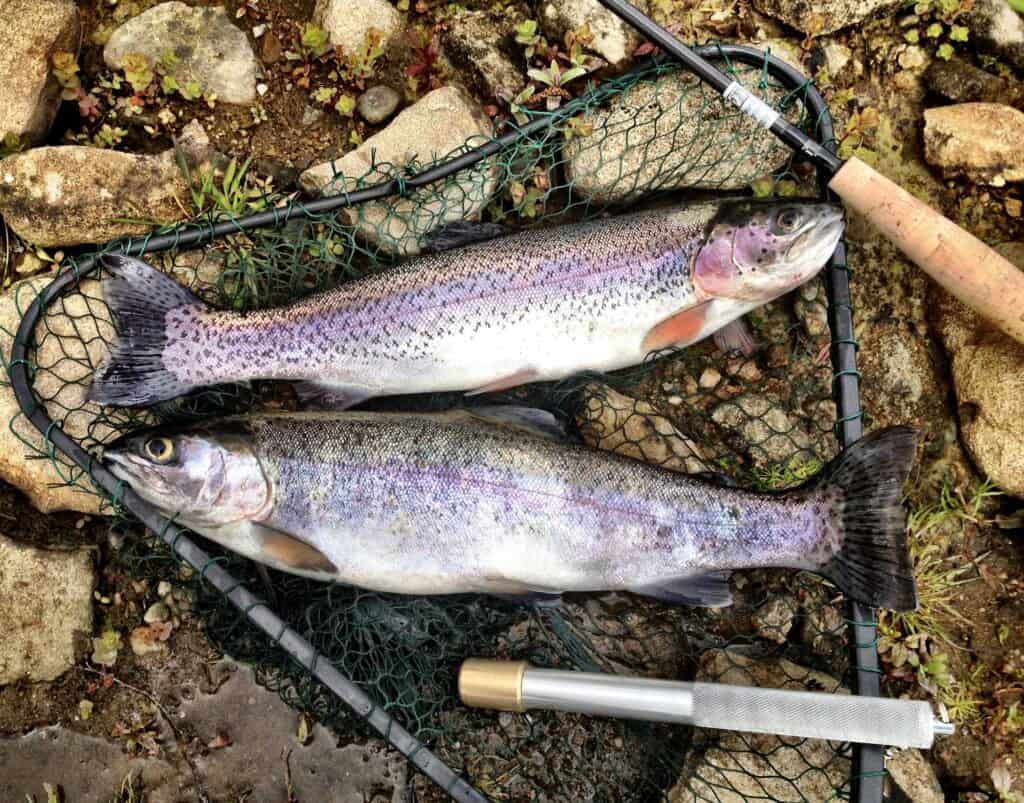
Usually, a rod and reel well-suited for a main line in the 4- to 8-pound test range will serve you well for trout fishing and also will get the job done for other popular freshwater species, such as bass and panfish.
(We’ll talk a little about fly fishing equipment further down in this article.)
Trout Fishing Line and Leader
Six-pound test on my spinning reel is a go-to main line weight for typical trout fishing, although dropping to 4-pound or increasing to 8-pound can be better for some conditions. You can choose monofilament or a variety of other lines including fluorocarbons, depending on preferences.
If you buy a reel with extra spools, this will enable you to easily switch from light tackle approaches to heavier gear and back, as your quarry and conditions change.
You will want to tailor your main and leader line according to fishing conditions, but the range above should work for most situations. Usually, anglers use leaders that are a bit lighter than their main line.
For other tackle, consider the types of fishing described below.
Trout Fishing License
In most areas, you also will need to buy an angling license for trout fishing. Fishing licenses might be available for time periods, typically ranging from a day to a year. Some states offer free or reduced price licenses for children, senior citizens, people with disabilities and perhaps other anglers.
Check out licensing requirements and other regulations, which are typically managed by state agencies but may also involve tribes or other organizations.
Many fish and game departments these days publish their regulations both online and in print.
In many places, retail stores that sell fishing supplies may also issue licenses for a fee and offer regulation booklets, but make sure you have a plan to not only be prepared with the right tackle but also to be fishing legally before setting out into the wilderness.
Some states also have started offering digital licensing options.
Bait Fishing for Trout
Still-fishing with bait is this is the most common way to catch trout, and perhaps the most fool-proof. One of your first decisions is whether you’ll fish near the bottom or suspend your bait from a bobber (float). It’s best to come prepared for both techniques, as trout feeding habits change quickly.
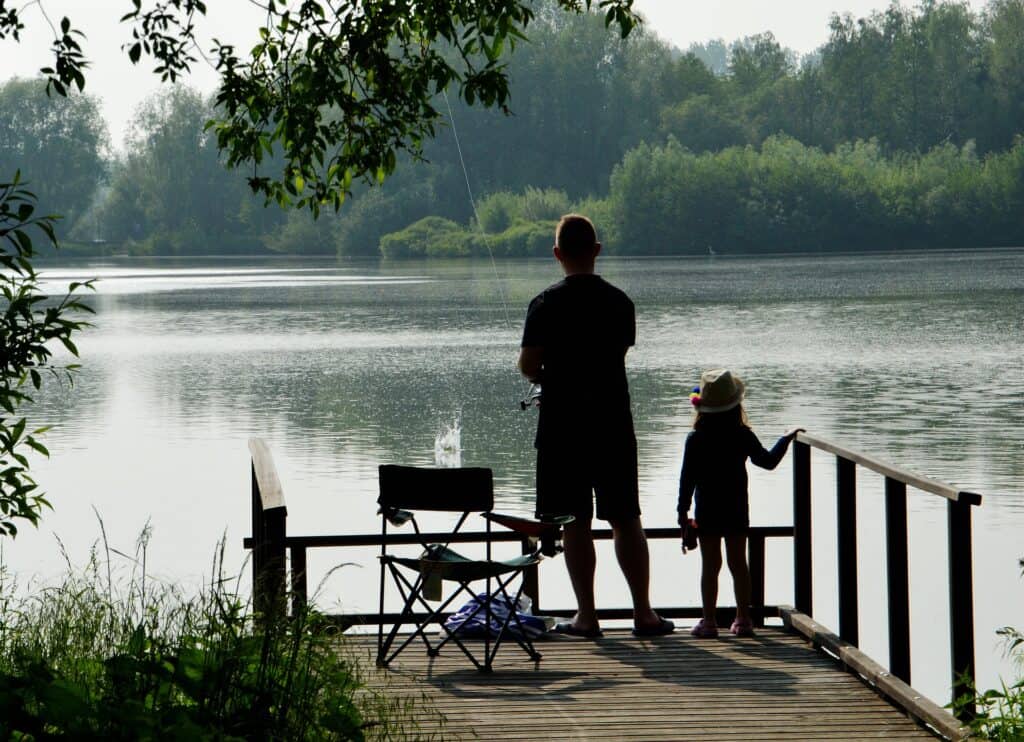
Bottom fishing can be very effective because trout in still waters often cruise just above the bottom in search of food.
If trout are surfacing or cruising near the surface, fishing bait beneath a float is effective and also a fun way to “see” the bite as the bobber moves or plunges underwater.
Natural Trout Baits
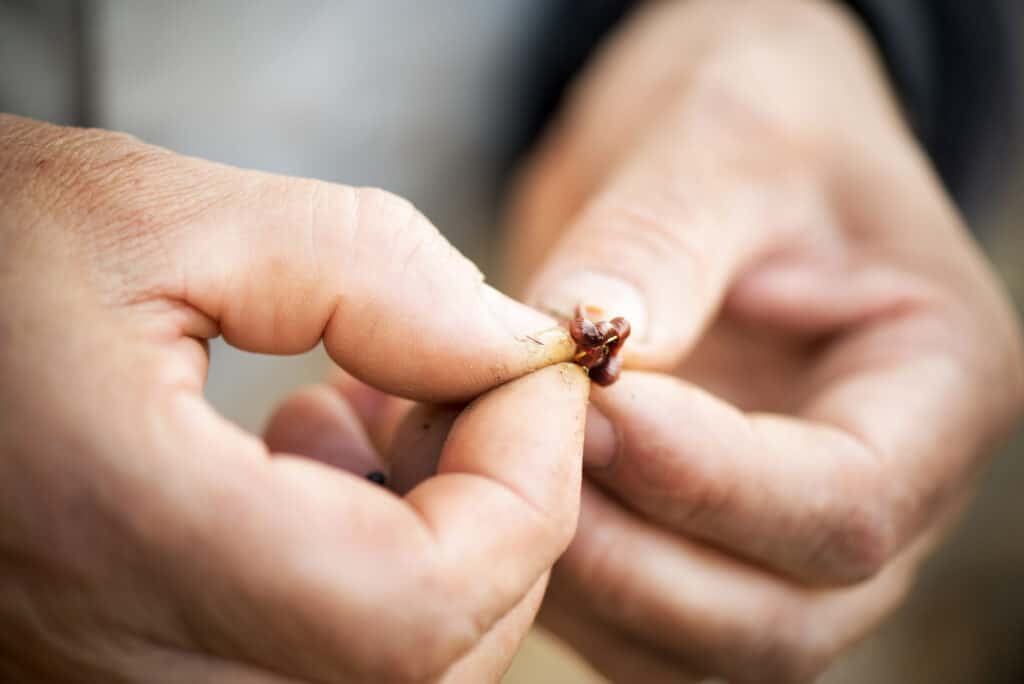
For catching trout, many anglers turn to natural baits. Nightcrawlers and other types of earthworms are an excellent choice. Salmon eggs, mealworms and locally available baits can also be very successful and often are similar to food sources in the environment.
Wild trout accustomed to foraging may be more likely to bite natural baits or good imitations.
Artificial Trout Baits
Artificial or prepared baits are easy to use and sometimes unbeatable when fishing in lakes and ponds for trout raised on a fish hatchery diet. Some of the most popular varieties come in doughs and pre-formed baits that are easy to put on hooks.
Many of these baits have the added advantages of floating off the bottom and coming in bright colors, making them exceptionally easy for trout to spot. Most are also scented as an added attractant.
There are multiple brands in this category that catch lots of fish, with Berkley PowerBait the best known among them.
For more on angling with that extremely popular bait, read Trout Fishing with Berkley PowerBait.
Natural baits or artificial baits that closely mimic naturals (like worm-shaped molded baits) are a great way to fool wild trout or stocked trout that have been free long enough to adapt to nature’s menu.
These baits work well in both lakes and streams. In lakes, they are most often still-fished, although slow retrieves can be irresistible at times.
In moving water, they can be fished still with weight or drifted downstream into likely holding water, including pools and behind structures such as boulders and logs.
Trout Bait Hooks
Hook choices with bait will depend on the type of bait used. Traditional bait-holder hooks in medium sizes work well for most natural baits and fit a trout’s mouth. A Size 8 will is pretty good starting point, and you often can buy them already tied to leaders.
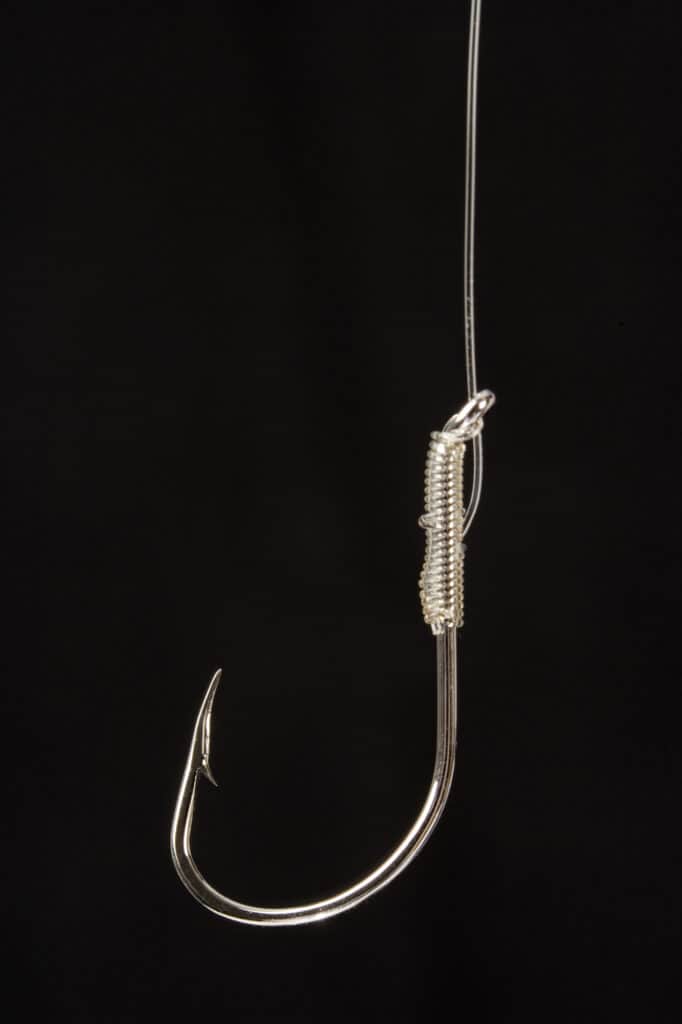
You’ll want slightly larger hooks (maybe a Size 6) for a mouthful of food, like a larger worm or longer piece of nightcrawler, and maybe smaller hooks (Size 10 or 12) for smaller natural baits.
Either a bait-holder or a treble hook can work well with artificial dough baits, with a treble hook more effective at keeping the bait on the hook.
However, a single point bait hook is easier to dislodge from a fish, especially if you plan to release it. Long hook shanks also make releasing fish easier.
Small egg hooks work well if fishing a single egg in either lakes or streams.
Bait Fishing Line and Leader
I like a 4- or 6-pound test main line for bait fishing for trout, usually with a 2- or 4-pound test monofilament leader. The heavier leader holds up better, but don’t hesitate to go lighter if the trout seem likely to be spooked, such as in very clear water. It may result in more bites.
I vary my leader length depending on the type of fishing.
For lake fishing, especially with floating baits, I usually use a leader that is 18-30 inches in length that allows the bait to float up a bit off the bottom.
The longer end of that leader range is slightly more difficult for casting, but I’ll go that route (and occasionally longer) if there is a layer of weeds down there that would hide the bait with a shorter leader.
For drifting bait in streams, which tend to be far shallower than lakes, I like a shorter 12- to 18-inch leader to keep the bait closer to the weight and near the bottom while it drifts.
I like to have a bit more control for guiding my bait into small holding spots that comes with having the bait closer to the weight.
Trout Fishing Weights (Sinkers)
Sliding sinkers are ideal when trout fishing with bait in still water, when you will want the line to move without the weight while a fish takes the bait. However, a fixed weight on the line offers better control when you are fishing with drifting bait in a trout stream.
For the lake setup, I slide these on the main line, tie on a swivel that doubles as a weight stop (sometimes with a small bead between the sinker and swivel to avoid any chance the swivel eye gets jammed in the sinker), and then attach the leader with my hook.
I use a similar setup while stream fishing, except that I use weights that can be set on the line or swivel during the drift.
Float Fishing for Trout
Floats (or bobbers) also can be very effective for trout fishing, especially when the fish are near the surface or you are trying to keep the bait above aquatic weeds or other snags. And, frankly, floats are also plain fun because you can see the bite happening when the float moves.
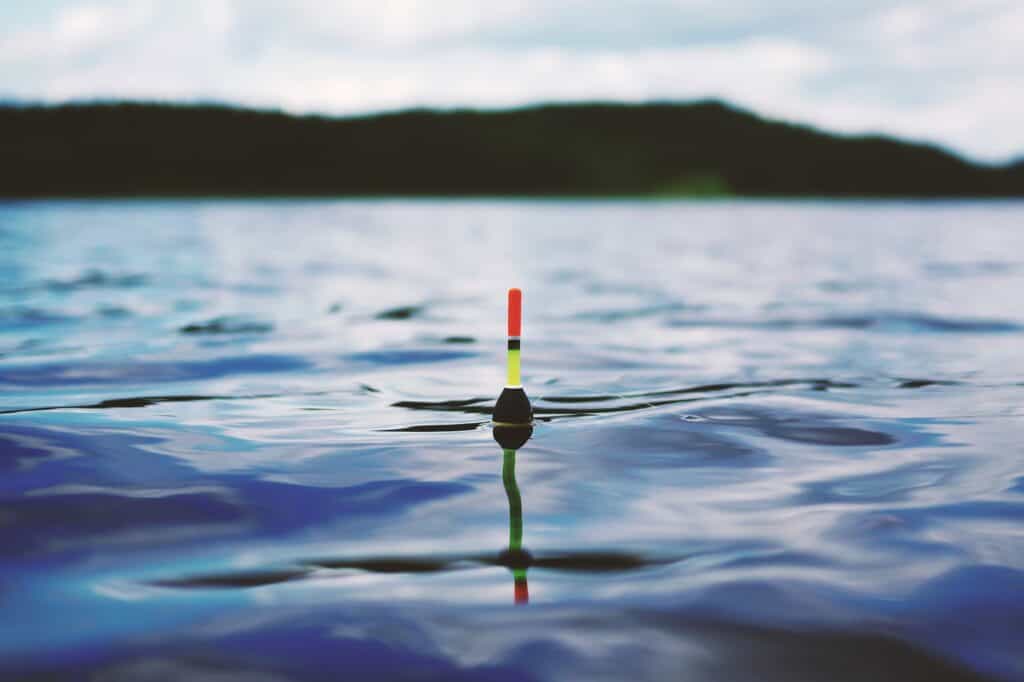
For bobber fishing, most anglers will use baits that sink, including natural or artificial options.
For float fishing, you can use a similar main line and leader set-up as described with bottom fishing, but instead of a weight you will use the float above your bobber.
If you need some extra oomph for casting, you can use a heavier float or even pinch on a little weight immediately below the float. Separating the weight and float will make casting more difficult.
I like about 24 to 36 inches of leader for float fishing, but sometimes a slightly longer leader results in more strikes and is worth a bit more challenge in terms of casting. (Give yourself a wider buffer zone away from the next angler when casting with long leaders.)
Floats also can be used in rivers and streams. Unless you know the fish are near the surface, set your bobber so that the bait drifts just above the bottom, where stream trout most often hold.
Bait Fishing Can Harm Fish
A final note on bait fishing for trout: Fish often swallow bait deeply and quite frequently don’t survive either being unhooked or having the leader cut.
For this reason, bait-fishing is prohibited in some waters, especially where catch-and-release fishing is required or encouraged. Bait fishing is most often prohibited when there is one or more protected fish species inhabiting the waterway.
Where fishing with bait is allowed, we recommend it primarily for anglers who plan to keep their catch.
Artificial lures and flies also discussed in this article are often better choices when you hope to release fish unharmed.
Lure Fishing for Trout
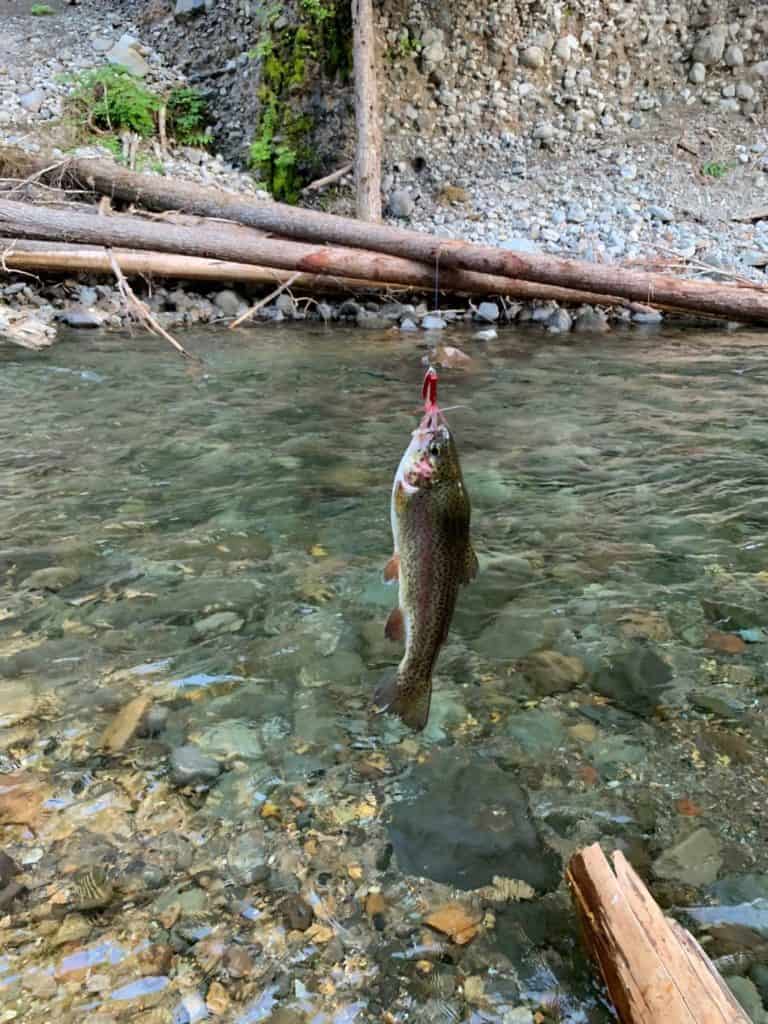 Photo by Eric Apalategui
Photo by Eric Apalategui
There are quite a few artificial lure types that work well for trout fishing, including spinners, spoons, jigs, and plugs or crankbaits. Most of these lures are designed to imitate a fish’s natural food sources, such as smaller fish, crayfish, or other prey.
Lures also can provoke an instinctive strike from aggressive fish trying to chase away an intruder.
Casting Lures for Trout
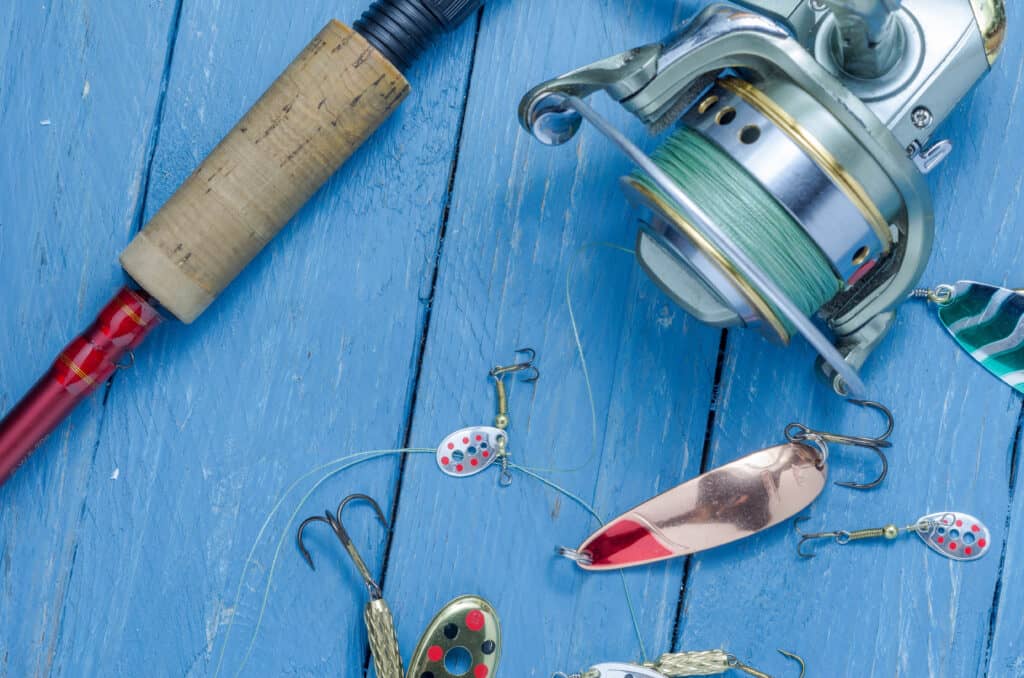
Some trout lures are designed to be cast out and retrieved. These tend to be heavier-bodied lures like spinners and spoons, plus some types of crankbaits, that lend themselves to longer casts and also sink on their own to reach deeper-holding fish.
Spinners (such as Mepps, Blue Fox and others) and spoons (such as Kastmaster, Little Cleo and others) are two broad types that we’ve used very successfully as casting lures to catch trout in both lakes and streams, but there are plenty of other choices and anglers find their favorites over time.
These types of lures can be used in still lakes and ponds as well as moving rivers and creeks.
This approach is an active form of fishing and often works best when anglers are willing and able to cover a fair bit of water, unless you find a spot with many holding or cruising fish.
In lakes, try letting the lure sink varying lengths of time before reeling it in, tracking the depth of your retrieval by counting the lure down.
Also vary the speed of your retrieve, and with spoons try making the spoon stop and start so it flutters at times.
Keep a mental note of what types of retrieves produce more strikes so you can better focus your efforts.
In streams, you can cast and retrieve similarly to lake fishing, or many lures are effective when cast upstream or across the current and then drifted, allowing the current to bring some tempting action to the lure before slowly retrieving it from downstream.
Trolling Lures for Trout
Another great way to catch trout is by trolling lures, which works in part because you can cover so much water and fish at a variety of depths until you find the fish. Spinners, spoons and other lures designed for trolling are often lighter in weight.
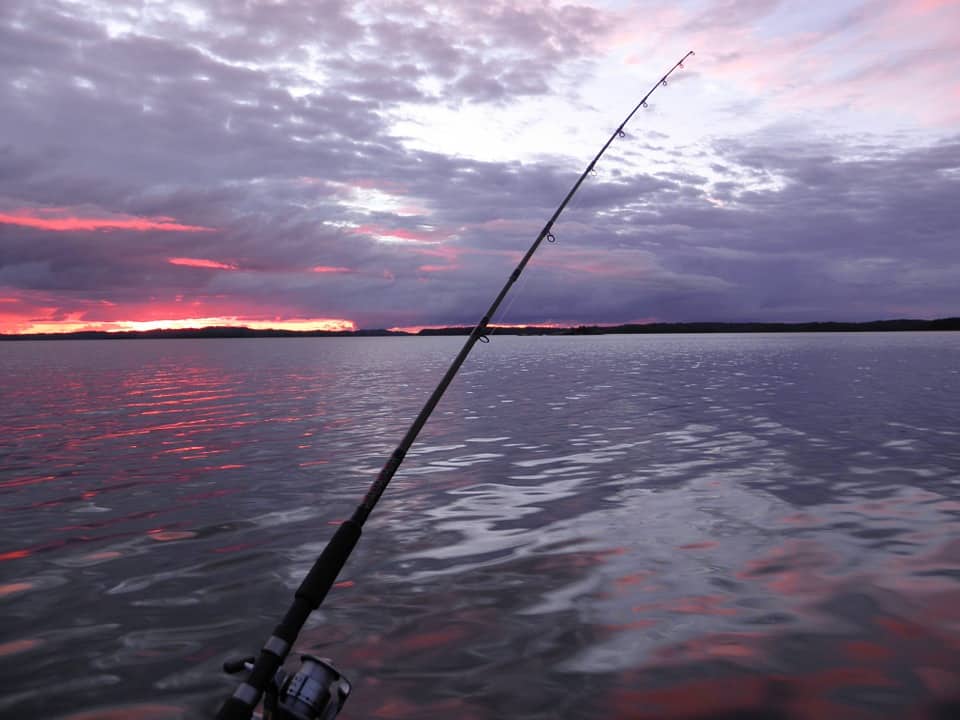
These types of lures produce tantalizing action as they are pulled through the water, and some anglers will enhance the offering with a bit of bait on the hook.
Many anglers will use weights or downriggers to sink their lures down to where deeper fish are holding, and some also use shiny flashers or gang trolls above the leader to attract fish toward the lure.
Lures that are primarily designed to be trolled for trout (and kokanee) through the water are lightweight and typically fished with attractors and often additional weight or a downrigger.
Popular lures of this type include Wedding Ring spinners, Dick Nite spoons, small-sized hootchies (squid-type lures), and similar lures.
Some lures including the previously mentioned weighted spinners and spoons that work well for casting also can be trolled, and they might not take as much (or any) weight, and often without an attractor.
The ever-popular Rooster Tail spinners are another casting lure that has boated many trout for us when trolled with a fairly flat line behind the boat, using just enough speed to feel the lure’s blade pulsate while it turns.
Try this approach without extra weight if the trout are running shallow, which is often the case if plenty of them are jumping or dimpling the surface.
The Rooster Tail doesn’t tend to run more than a few feet below the surface while trolled, though, so you’ll need extra weight or another setup if the fish are deeper.
Fly Fishing for Trout
Fly fishing is often seen as the pinnacle of trout fishing, whether you are drawn to blue-ribbon trout streams or crystalline mountain lakes. Indeed, anglers can spend their entire fishing lives perfecting their abilities to match hatches and present artificial flies convincingly.
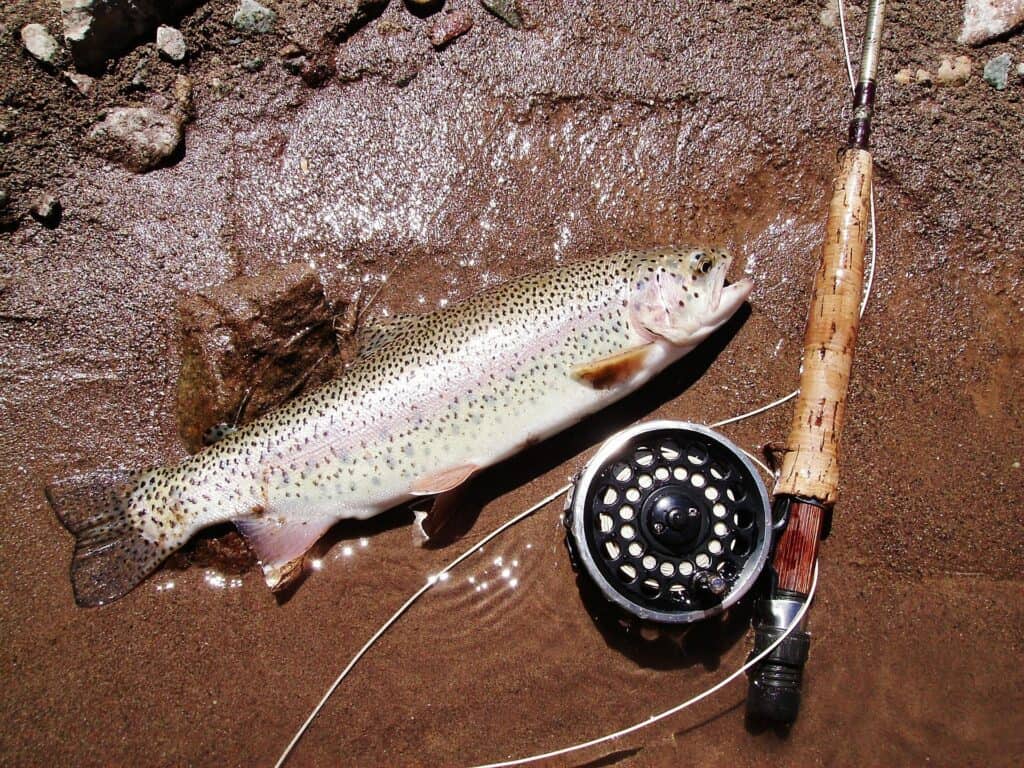
A fair number of the waters we cover on Best Fishing in America only allow anglers to use artificial flies and other lures, and a handful of places you can learn about from our website are strictly open to fly fishing.
Fly Rods, Reels, Line and Flies for Trout Fishing
But it doesn’t have to be that complex to get into the sport.
Start your fly fishing success with a decent-quality rod and reel (Editor’s note: cheap models usually lead to frustration) that are well-suited to trout fishing and give it a try, preferably somewhere where the fish aren’t too finicky for your first trips.
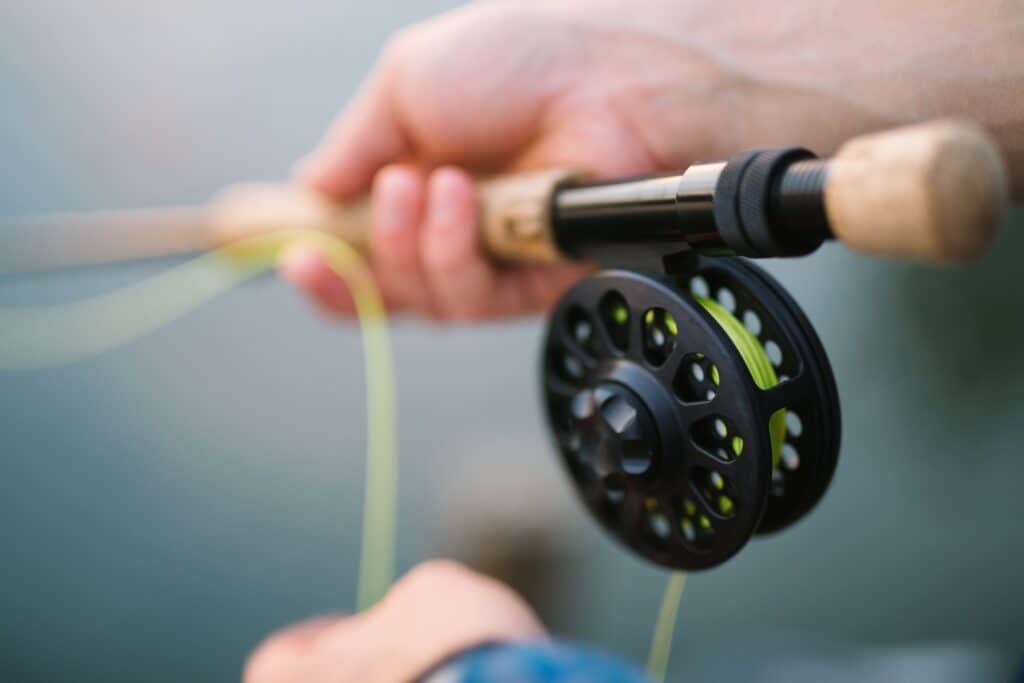
You’ll need a couple types of fly line, some tippets and selection of a half dozen or so locally popular flies. Think about both wet (sinking) and dry (floating) patterns and lines.
We can’t possibly cover all of the nuances of this sport in this little overview, but we want to open your mind to the possibilities and whet your appetite to wet a fly line.
Our best advice here is to go to your area’s fly-fishing shop to get information about what works best in the areas you will be fishing, especially when it comes to fly patterns that are going to work best for the types of water, species of trout and time of year.
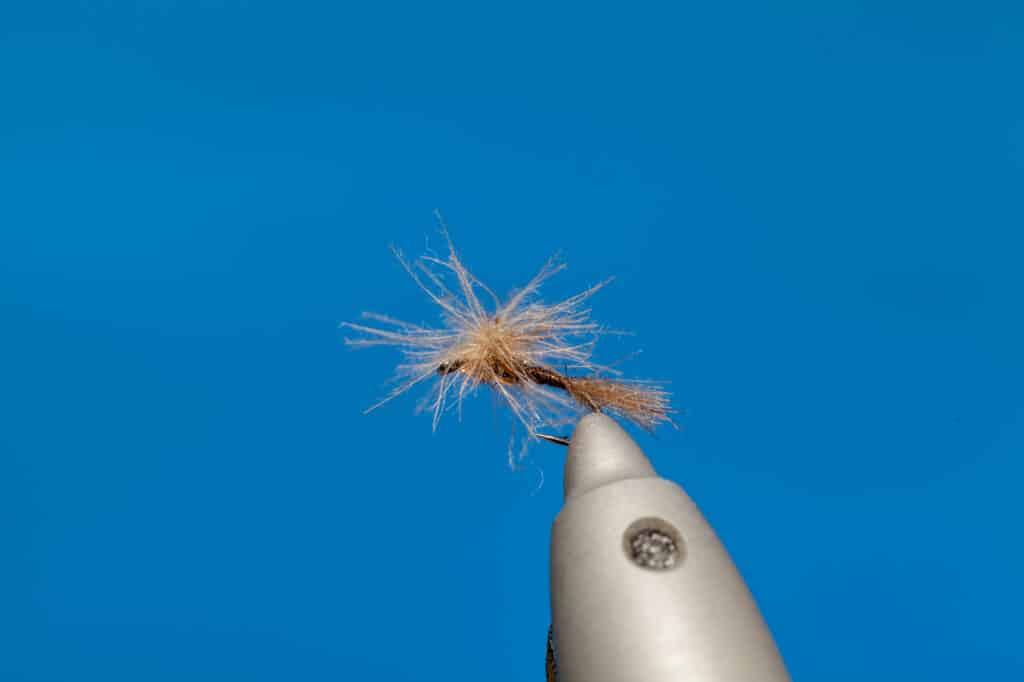
As you gain experience, you’ll broaden your horizons. Maybe you’ll learn a specialty type of fly fishing like tenkara for small trout or spey casting for giant steelhead.
A fair number of serious fly anglers start tying their own flies, which is a fascinating hobby in its own right.
If you wanted to get started right away and need a hand stocking your fly box, check out our Best Fly Fishing Flies in the Pacific Northwest.
Learning to Cast a Fly Rod
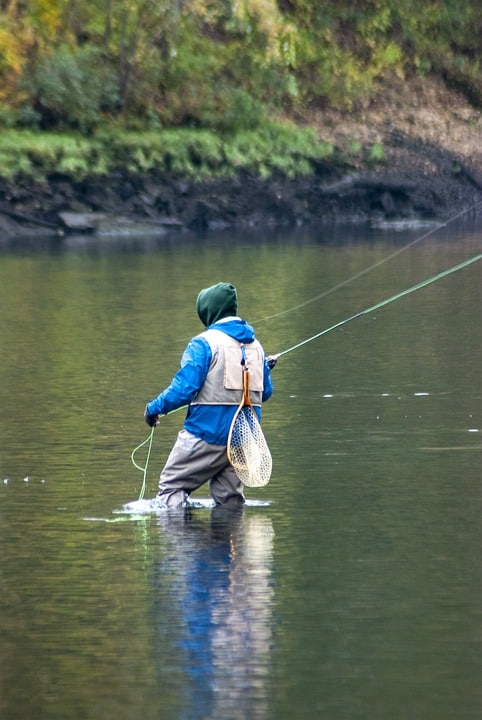
But first things first. If you plan to really give this sport a chance, you’ll want to invest some time and money into learning casting techniques.
Fly shops and fishing guides might offer fly-casting lessons, and sometimes community organizations such as parks and recreation districts or community colleges will schedule budget-friendly classes.
Fly Fishing without a Fly Rod
No, you don’t actually need to use a fly rod to catch trout with artificial flies. Anglers with spinning or casting gear can often catch trout, often with the help of a casting bubble (a clear bobber fixed above the fly) in both lakes and streams.
Be sure to read all fishing regulations, because some areas have strict rules for fly-fishing only waters.
We have also had some great days trolling flies very slowly behind a boat (often no faster than a drift) or float tube or similar craft, using either conventional or fly rods.
Usually wet flies (sinking) with some natural action, including woolly buggers, are most effective for this kind of fishing.
If the fish are right on the surface, you might do well without any additional weight, dragging the fly slowly just inches below the surface.
If that’s not reaching fish, though, don’t be shy about adding just a little split shot weight or two to your line, a few feet above the fly.
Best Trout Fishing
Click the following state-based articles to find the best trout fishing lakes and streams in each location. We are currently in the process of adding more states.















![Toni Kroos là ai? [ sự thật về tiểu sử đầy đủ Toni Kroos ]](https://evbn.org/wp-content/uploads/New-Project-6635-1671934592.jpg)


